Map of Hascombe
Hascombe has five owners during its lifetime, most of them are avid gardeners. The mass planting carried out in the 1930s forms the backbone of the present garden.
The first owner R.L.J. Elery constructed a villa on the site in the 1870s. The garden was significantly expanded by R.S. Whiting who blended his design with the natural landscape of the creek and its backdrop of blackwoods and tree ferns.
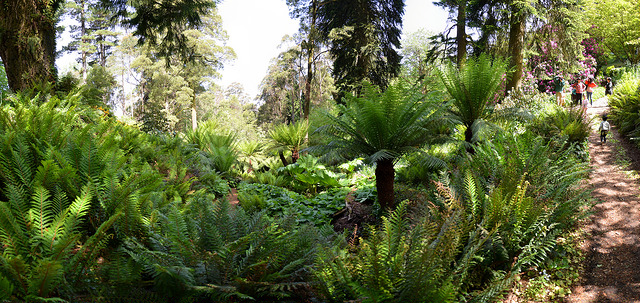
Gunnera Gully with giant ferns along the creek
In the 1930s, the owner at the time, S. Ricketson installed a log cabin, tennis courts and a Douglas Pine plantation. The garden was further developed by Sir Thomas and Lady Ramsay from the 1930s to 1989, after which the garden was purchased by Paula and Lindsay Fox. The garden is now taken care of by a team of 3 full-time gardeners and one volunteer.
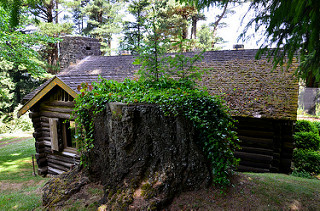 |
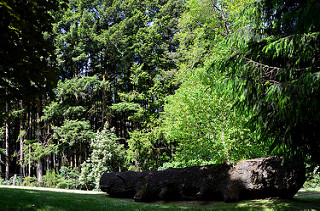 |
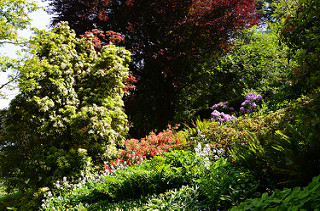 |
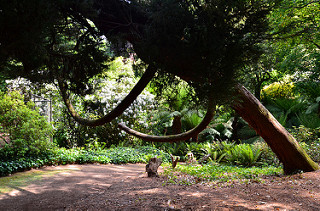 |
Area around the log cabin
The garden consists of a number of terraced levels with stone retaining walls. A system of pathways and steps link the various levels.
A level area, previously the original tennis court, is now occupied by a tranquil well-proportioned pond. The surrounding meadow adds to the serenity by producing a succession of bulbs from late winter to summer.
The garden has a Holly and Linden Walk, hedges comprising Pittosporum, Viburnum, Ilex and Eucryphia species.

Photo taken along the Holly Walk
There are gardens with different features:
- Vegetable Garden – becomes very labour intensive in summer, with calendula and other cheerful plants interspersed among cauliflowers and cabbages.
- Picking Garden – displays a range of colourful flower varieties.
- Woodland Garden – showcases spring bulbs.
It is a pity that I miss visiting the above-mentioned gardens due to the need to move along with friends.
The Hascombe Garden features many rare cool climate trees, shrubs and perennial plants, some of which are described in the following section.
Annuals and perennials
- Welsh poppies (Meconopsis cambrica).
- Russell lupins (Lupinus Russell hybrids).
- Foxgloves (Digitalis purpurea hybrids).
- Trachystemon orientalis – a leafy plant in the forget-me-not family.
Shrubs
- Mountain laurel (Kalmia latifolia) – a cool climate shrub with icing-sugar pink flowers.
- Beauty bush (Kolkwitzia amabilis).
Trees
Having attained mature size, the many trees are significant features of Hascombe. The notable trees include:
- Weeping Wych Elm (Ulmus glabra ‘Horizontalis’) – planted 100 years ago as a 3-metre (10-feet) high grafted specimen and classified on the heritage list.
- West Himalayan Fir (Abies pindrow) – one of only two mature specimens in Australia; the other is in Canberra.
- Cappadocian Maple (Acer cappadocicum) – also known as the Coliseum or Caucasian Maple, this displays a striking autumn colour with the translucency of its yellow foliage.
- Japanese Red Cedar (Cryptomeria japonica ‘Elegans’) – grows to 25m high and as winter approaches, its fine prickly foliage becomes increasingly attractive as it turns to russet.
 |
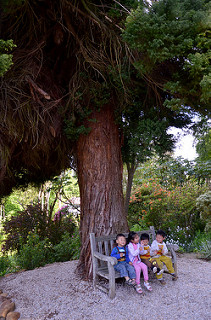 |
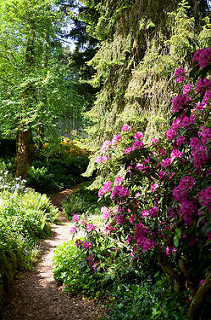 |
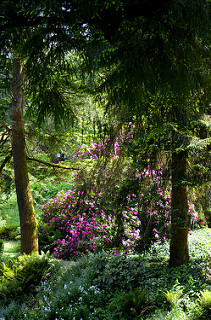 |
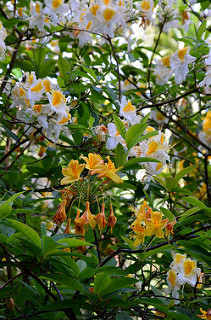 |
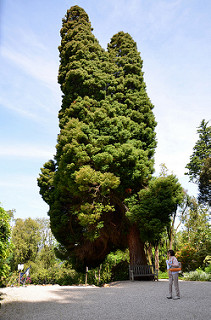 |
Hascombe is a private garden and is not normally open to the public. It participates in the Australian Open Gardens program and I visited it when it was opened on 25 Nov 2012. I was told by the staff there that the Garden has not been opened for 7 years.

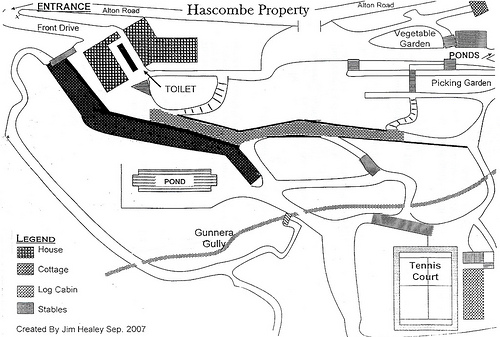
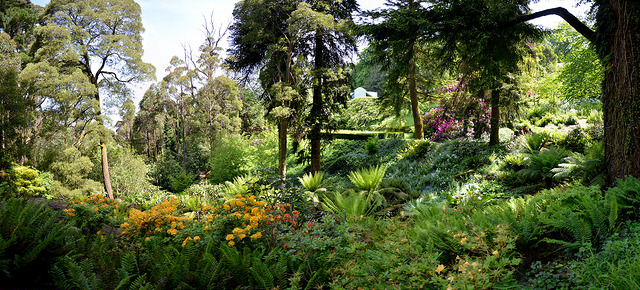
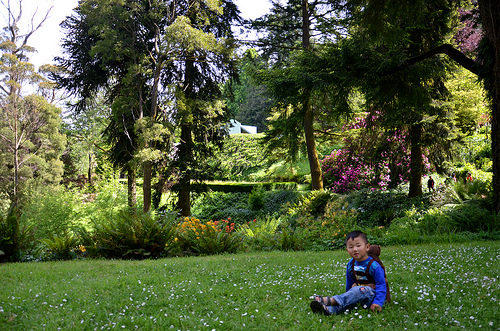
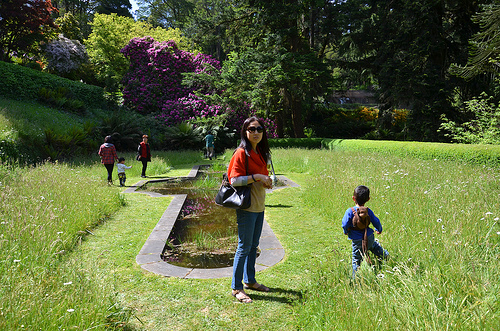
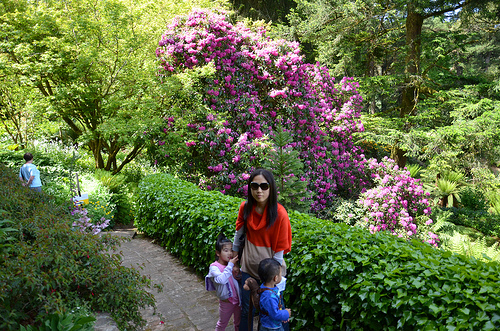
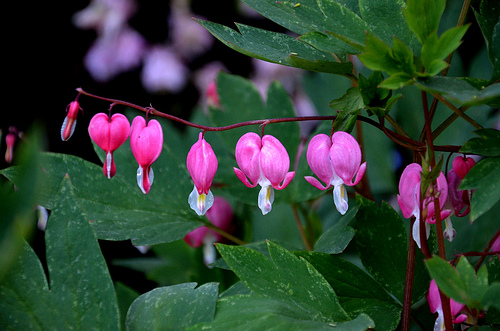
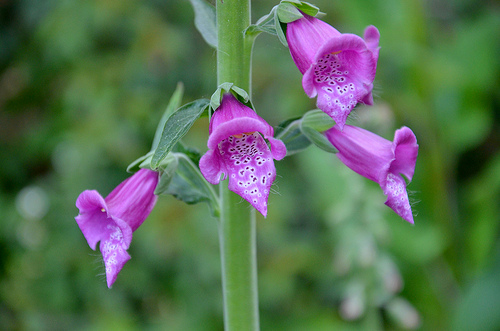


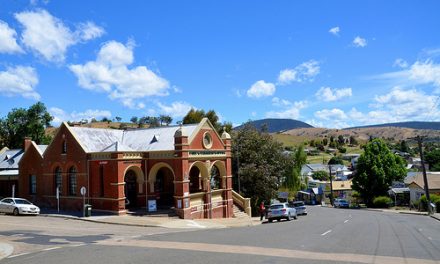
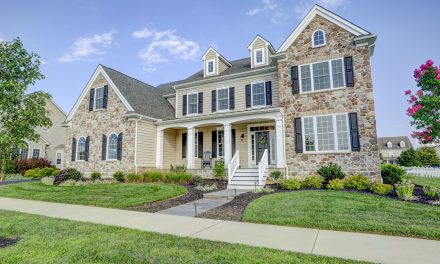
That heart-shaped flower is called a Bleeding Heart or Dicentra spp. 🙂
Thanks for the name of the plant!